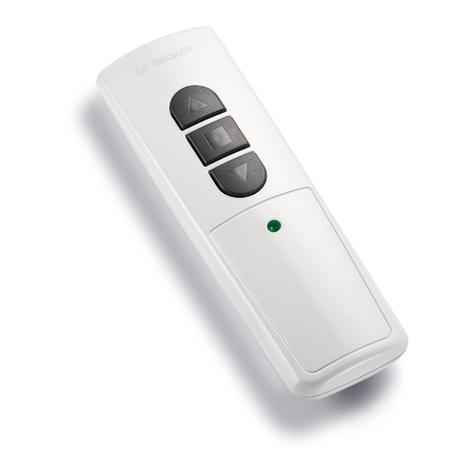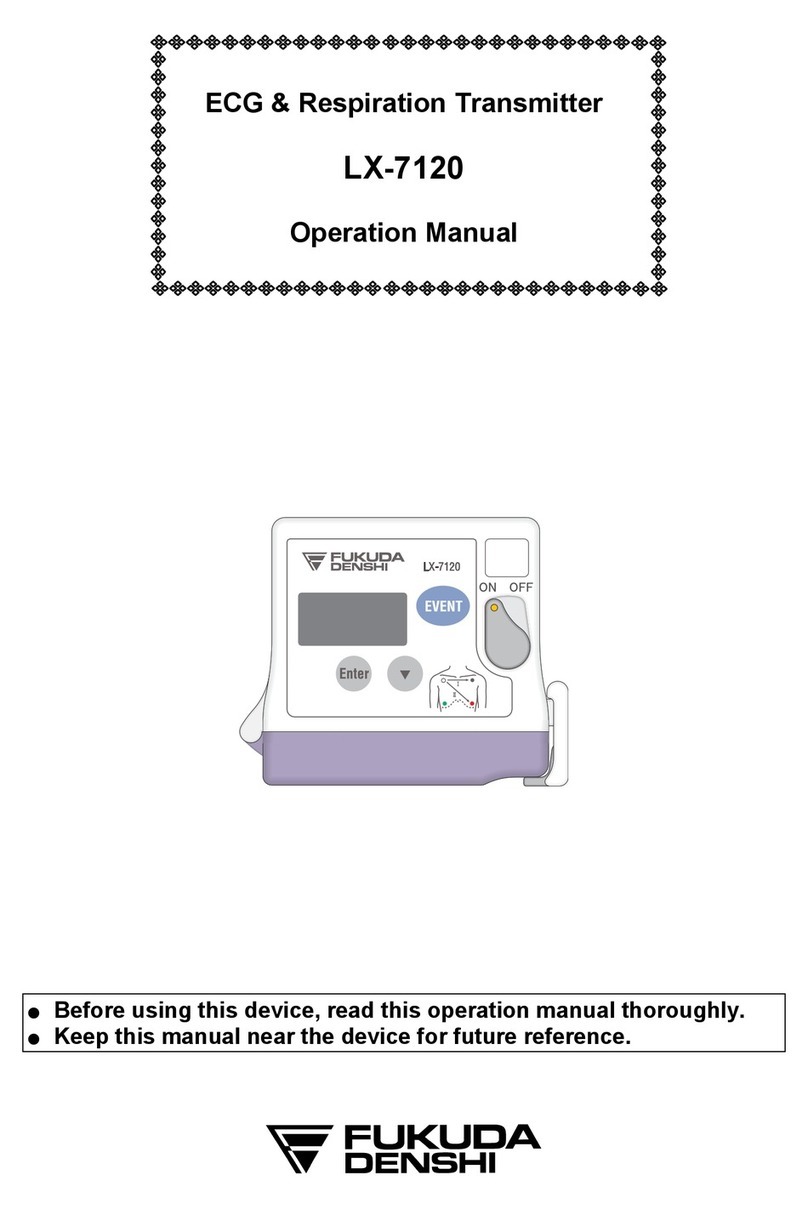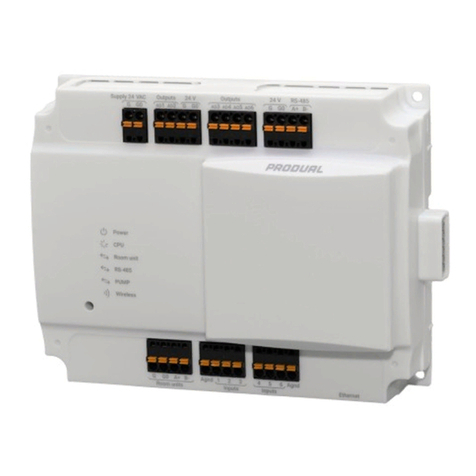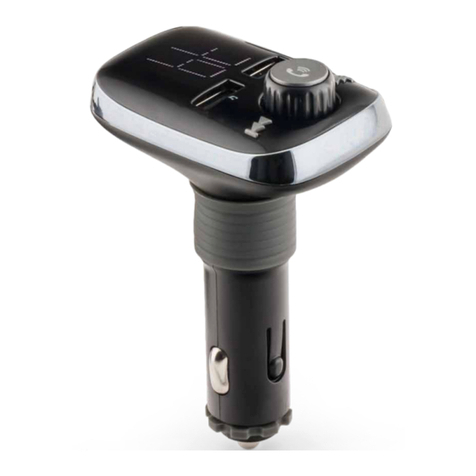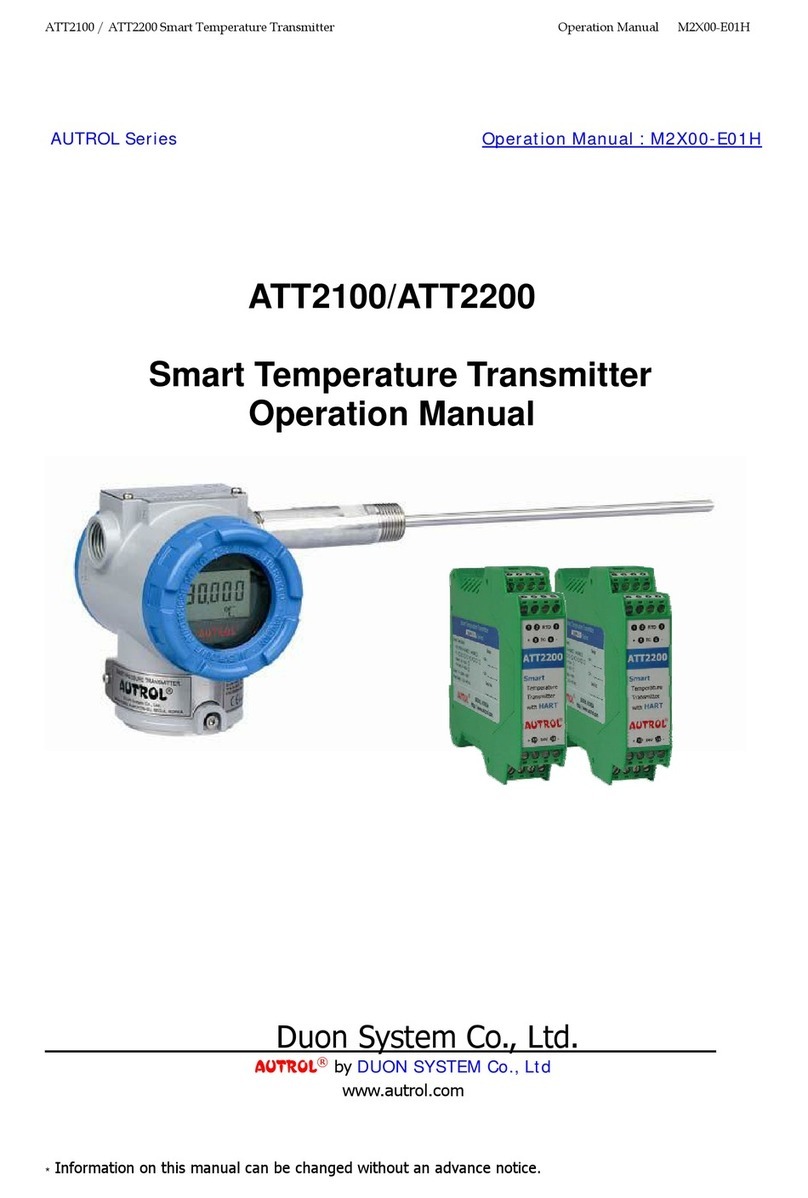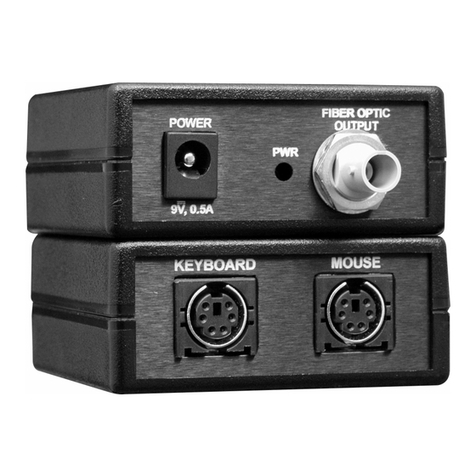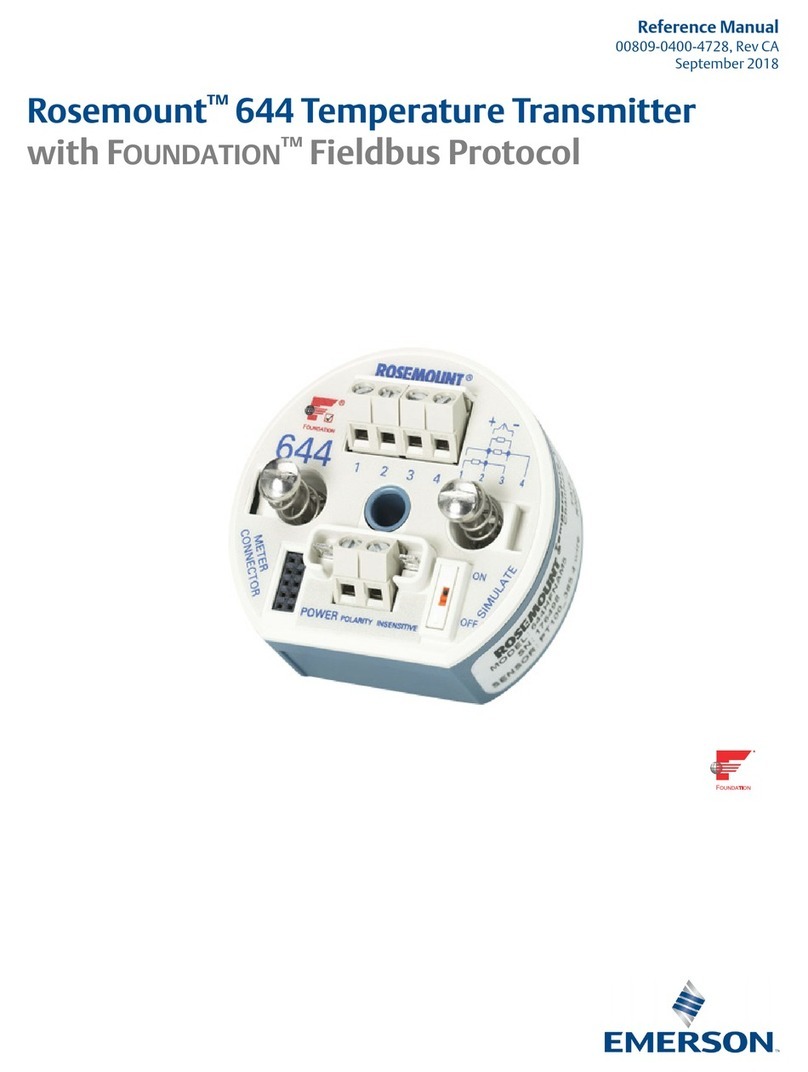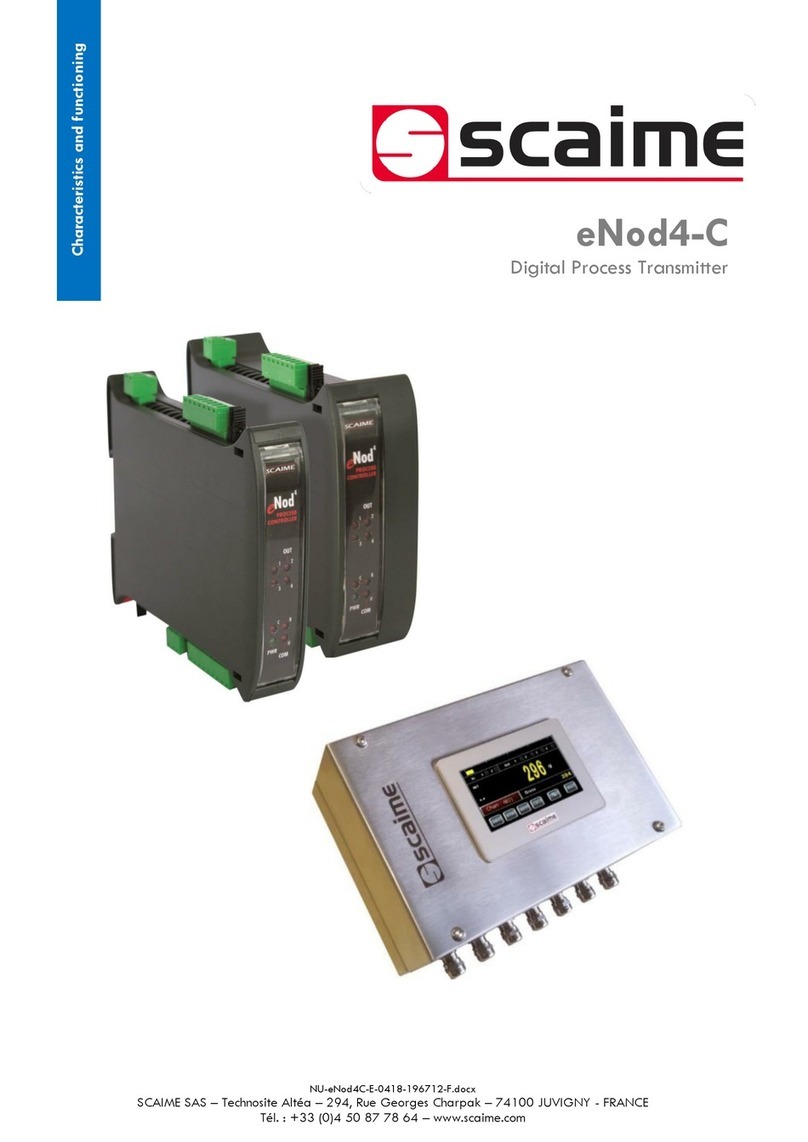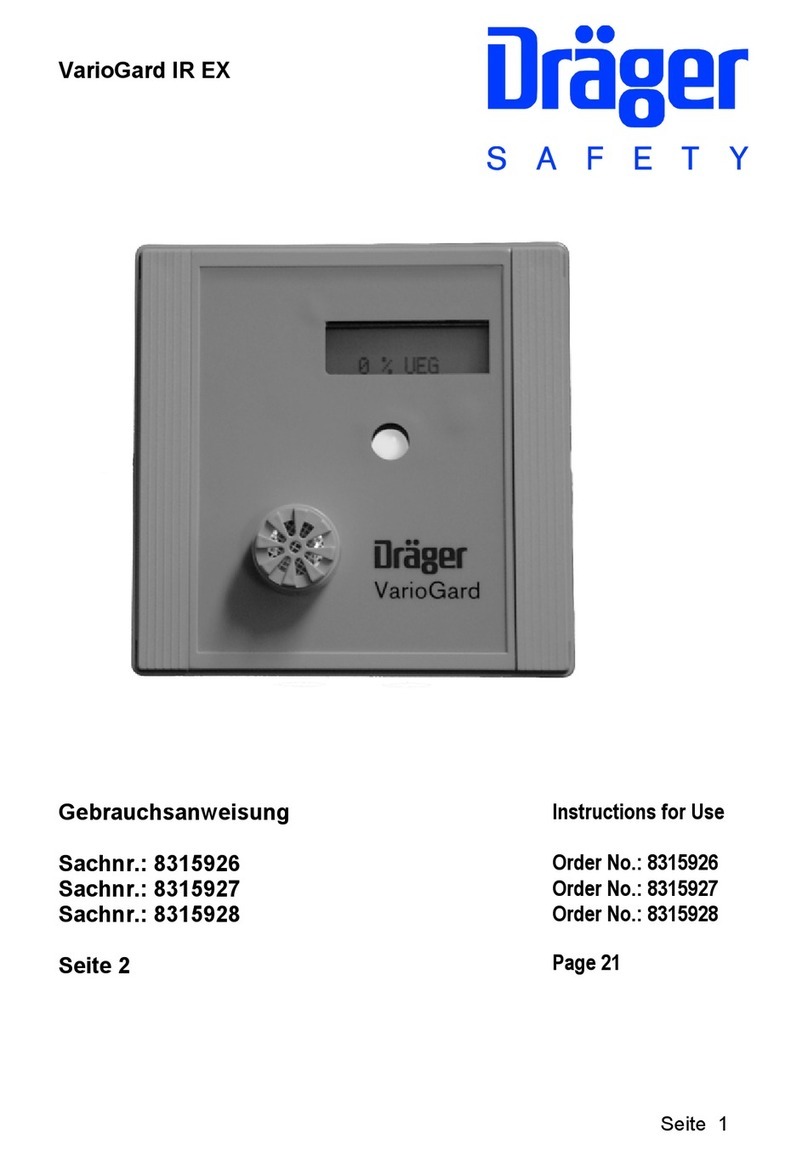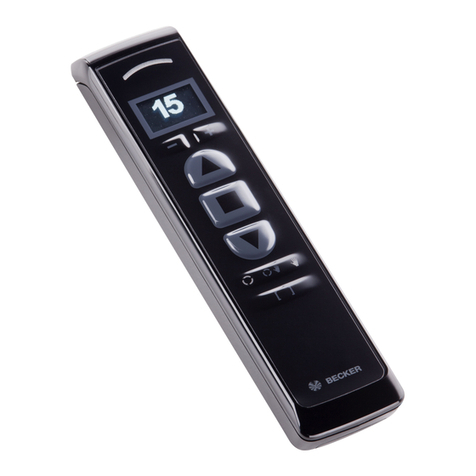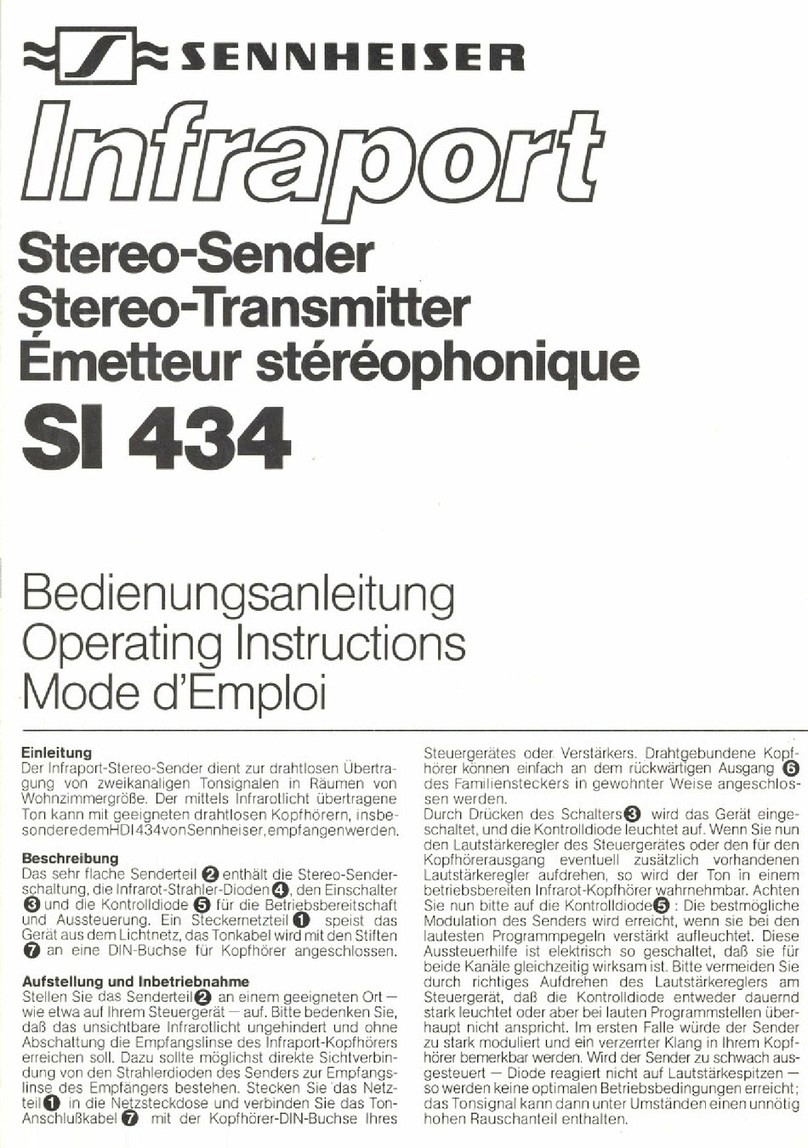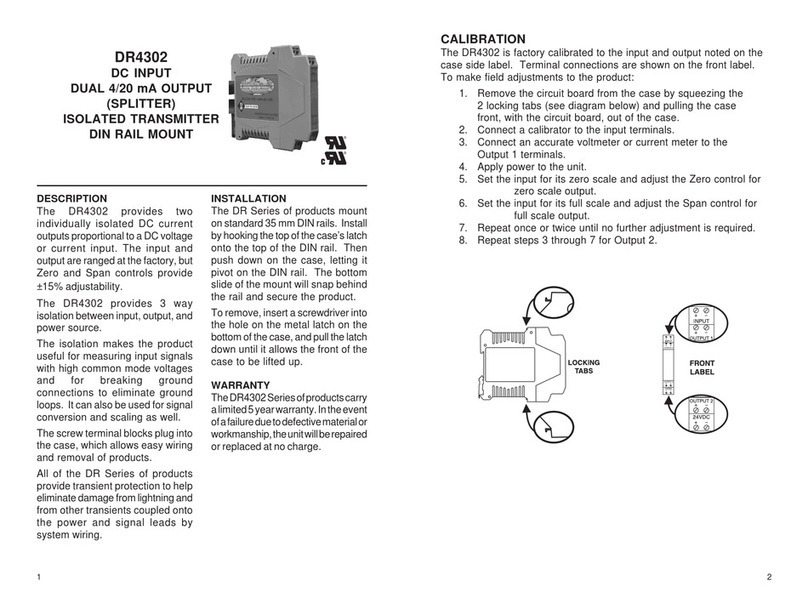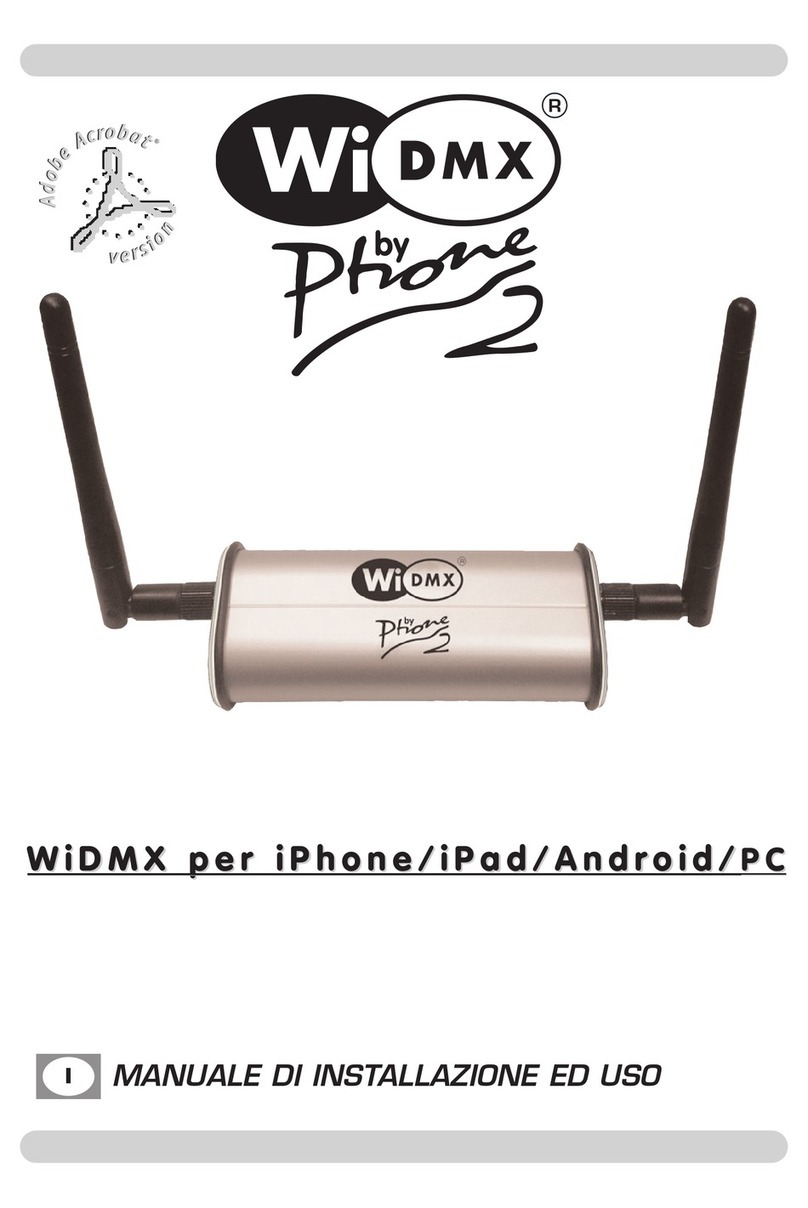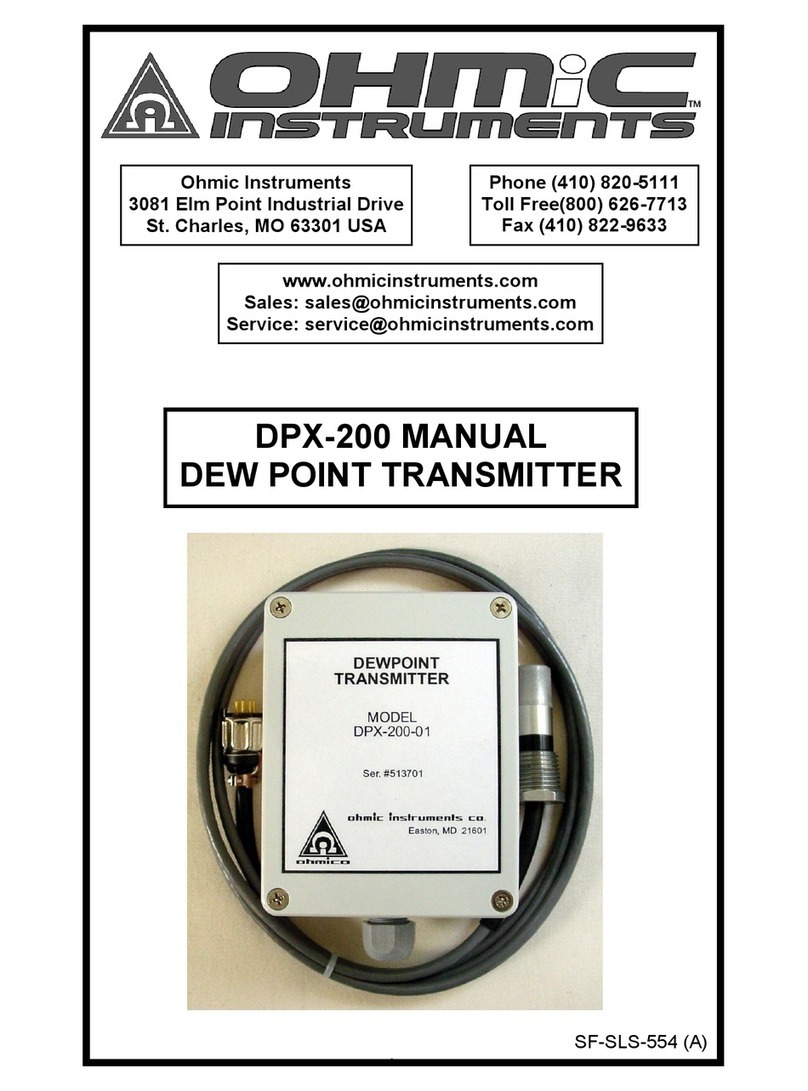
The Clark Reliance Corporation
16633 Foltz Industrial Parkway | Strongsville, OH 44149 | Telephone +1 (440) 572-1500 Facsimile: +1 (440)-238-8828
Email: sales@clark-reliance.com | Web Site: www.clark-reliance.com
NOTE: Be sure you have the transmitter loop #1 connected to a load of 250 to 500 Ohms. A unit installed in a control loop
is a good example of this loop load. You may also use a load resistor in the range of the above value.
5. Press the black and white "I/O" button on the HART terminal. The terminal will go into self-test, then into the main
screen. If not connected properly, you will get a "No device found" message.
6. From the main screen, press keypad key #1, "Device Setup".
7. From the "Device Setup” screen, press key #3, "Basic Setup".
8. Press key #3. You are now in "Range Values" screen.
To set low value
To set the low value (4 mA), select key #1, PV LRV (Process Variable, Lower Range Value). You are now in the PV LRV
screen. The current low value is displayed. Below this value is a highlighted value. Key in the desired low value (example
3.00 in. is shown; if 4 inches is desired, key in 4.) When the new desired low value is keyed in, press the "enter" (F4)
button located below the LCD display, right. To write the changed lower value to memory, press the "SEND" key now.
Next you will see two "WARNING" screens that ask if you are sure. If your new low values are correct, press "OK" for both
messages. This action resets the Lower Range Value, or 4 mA position into the transmitter's memory. Go back to the
"Range Values" screen to verify that the new parameters have been accepted into the transmitter memory.
You may now exit program mode or continue on to reset the upper value. If you choose to exit the program mode, replace
the calibration jumper to the "ON” position, and return your controllers to automatic.
To set high value
You should now be in the "Range Values" screen. To set the 20 mA (Upper Range), press key #2. You are now in the "PV
URV" (Process Variable, Upper Range Value) screen. As in the lower value screen, the current value is displayed with a
highlighted number below it. To change the upper value, key in the desired value. You may use whole numbers or whole
numbers and decimal numbers (40 = 40 inches, or 40.5 = 40.50 inches). Whole numbers will be entered as their decimal
equivalents by HART automatically. Key in the desired upper range value desired. Press the "Enter" (F4) button.
You are back in the "Range Values" screen. If the numbers for lower and upper are correct, press the "Send" key. You will
get a "WARNING!" Press the "OK" button. You will again get "WARNING!" Press ”OK" again.
Startup is now complete.
CAUTION! Do not enter a high value that exceeds the active length of the sensor!
7.2 Calibration
The MTII4200 has three buttons for calibration:
←Enter Pressing any button will cause the unit to enter calibration.
▼Down Arrow Pressing all three buttons at any one time will exit the calibration
▲Up Arrow mode.
1.) Turn the power on to the unit.
2.) Wait for the self-diagnostics to complete.
3.) Press any button to start calibration mode.
4.) The screen will display “Cal Lev 1?”.
5.) The far right button is the “Enter” key.
6.) Press the Enter key.
7.) The screen will display “Set Zero?”.
8.) Move the float to the zero, (4mA), location.
9.) Press the Enter key.
10.) The screen will display “Zero (corresponding number)”.
11.) Press Enter to reset the (corresponding number) to zero and hold for approximately 1-2 seconds.
12.) The screen will display “Accept?”.
13.) Press Enter (You have now set the zero point).
14.) The screen will display “Cal Lev 1?”.
15.) Press Enter.
16.) The screen will display “Set Zero?”.







